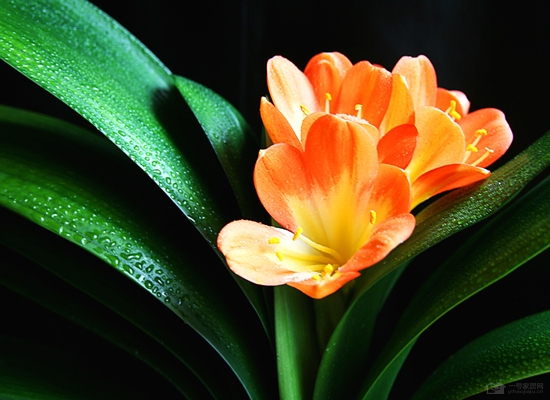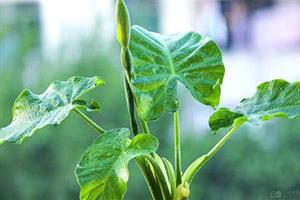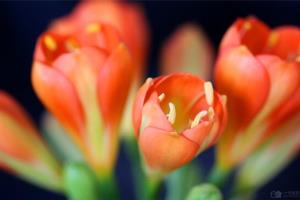How to raise Cymbidium and plant it need to pay attention to 9 matters
Cymbidium is not only green, but also beautiful, coupled with the care of traditional culture, indoor cultivation of orchids becomes more common. So, how to raise a gentleman's orchid? Gentleman orchid is not as rough as green orchid, hanging orchid and so on, so we need to take good care of it. As long as the cultivation is careful, the magnificent orchid can be rewarded with beautiful flowers.

Magnolia is an evergreen perennial herb, native to the mountain forests of South Africa, where the natural environment is like spring all the year round, and various organs of the plant have adapted to this lukewarm natural environment.
1. Soil
Fertile and loose neutral or weakly acidic rotten soil is the most suitable hotbed for magnolia. The choice of soil is the first key factor for magnolia, and it is also one of the reasons why many people can't raise it well.
Cultivation soil formula: rotten leaf soil (rotten leaf soil preferably oak leaves) 55%, river sand 15%, pine needle 15%, charcoal 10%, pockmarked 5%.
a. The soil is screened and sterilized.
b. Stir-fry pockmarked seeds and mix well with the soil.
c. Add a layer of charcoal to the bottom of the basin to increase the air permeability and prevent stagnant water.
d. Add a handful of pockmarked seeds to the bottom of the basin as base fertilizer. (this part of pockmarked seeds is not included in the formula)
PS: beginners can also directly buy special soil for planting magnolia.
2. Lighting
Cymbidium likes semi-shade, so growing orchids indoors requires manual adjustment of the effect of light on it. The leaves of Cymbidium have phototaxis, and if they are kept indoors for a long time, the leaves must be deflected in the direction of the sun. Therefore, in order to make the orchids look good-looking and have ornamental value, we have to change the direction of the leaves to the sun every other week. Only in this way can Cymbidium grow staggered.
The arrangement of the gentleman orchid must be in the north-south direction, not in the north-south direction. At this time, the two leaves can be pulled together and clamped up. Normally, the leaves will be corrected in 20 days.
3. Temperature
The most suitable temperature is 15-25 degrees.
4. Watering
Therefore, watering should not be too much, only combined with fertilization watering, to keep the basin soil moist. The soil should not be too dry or too wet. Every time it is watered, it must be thoroughly watered, and some more should be watered after budding. But every 20 days or so. Watering should be controlled when the room temperature is low to prevent the basin soil from getting too wet, but it should not be made too dry.
5. Fertilization
Orchids are usually fertilized in winter. Phosphate fertilizer and potash fertilizer are more beneficial to the cultivation of Magnolia, and less nitrogen fertilizer is applied when topdressing. Be sure to control the amount of fertilization, or it is easy to cause charred symptoms at the leaf tip of Cymbidium, especially in winter, if the leaves are spotted and the roots are yellow, it is the reason for excessive fertilization.
Household phosphate and potash methods: you can choose eggshell powder and cooked fish water; bran ash and tobacco ash can be used as potash fertilizer to fertilize magnolia. Three months before flowering, liquid fertilizer was applied mainly with phosphorus and potassium fertilizer to promote its arrows to blossom.
6. Heat preservation
The suitable temperature for the growth of Cymbidium in winter is 15-20 ℃, and it is better not lower than 10 ℃. The temperature should be kept at about 18 ℃ after scurrying, and the temperature difference between day and night should be about 10 ℃, otherwise the flower arrow will blossom if it does not reach a proper height, and it is easy to form a "sandwiched arrow". The magnolia should be moved indoors when the outdoor temperature is lower than 10 ℃ at night. When the indoor temperature is lower than 10 ℃, in addition to covering the surface of the basin soil with a layer of charcoal powder 1 inch thick for heat preservation, the flowerpot should also be placed in the indoor sunny place. When the indoor temperature is very low, cover the film on the flowerpot to raise temperature, but the temperature in the cover should not exceed 25 ℃, if it exceeds, it should be ventilated and cooled in time.
7. Prolong the florescence
The florescence of Magnolia is mostly from December to March of the following year. The way to prolong the flowering period is to place the flower in a dark place when it is about to bloom, properly control the watering, and keep the temperature at 8-12 ℃. In this way, the florescence can be extended by 10-20 days.
8. Leaf protection
The leaves are short, wide, thick, green, bright and strong, which are the characteristics of healthy orchids. In addition to providing reasonable fertilizer and water, the leaf surface must be kept clean in order to improve photosynthetic efficiency. One is to wash the leaves regularly and wash or wipe off the dust on the leaves with the same water as the room temperature; the other is to spray fungicides in time to prevent the occurrence of leaf spot, leaf blight and stem rot and ensure that the leaves are green.
9. Time to change the basin
The time and times of toppling and changing soil of Cymbidium depends on the size and season of the seedlings. An adult gentleman orchid needs to change the soil once a year. The best time to change soil is in spring and autumn, because the orchid grows vigorously at this time and will not affect the growth of the plant.
It seems that the cultivation of Cymbidium still has a lot of knowledge, can not just watering anything else, it also needs to pay attention to the direction of the leaves, otherwise it will be difficult to cultivate a perfect effect.
Related
- Wuhan Hospital Iron Tree Blooming Result Was Instantly Frightened by the Gardener Master
- Which variety of camellia is the most fragrant and best? Which one do you like best?
- What is the small blue coat, the breeding methods and matters needing attention of the succulent plant
- Dormancy time and maintenance management of succulent plants during dormancy
- Minas succulent how to raise, Minas succulent plant pictures
- What are the varieties of winter succulent plants
- How to raise succulent plants in twelve rolls? let's take a look at some experience of breeding twelve rolls.
- Attention should be paid to water control for succulent plants during dormant period (winter and summer)
- Watering experience of twelve rolls of succulent plants
- Techniques for fertilizing succulent plants. An article will let you know how to fertilize succulent plants.



